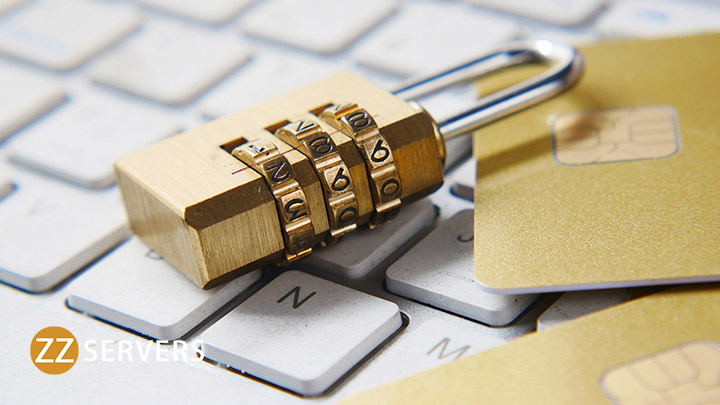Email continues to be one of the most widely used communication methods in business today. However, with the rise of cyber threats, organizations must take steps to secure their email systems. Microsoft 365 provides robust tools to help protect your organization’s sensitive data and ensure the privacy of communications.
Configuring Exchange Online Protection
Exchange Online Protection (EOP) should be the foundation of your Microsoft Office 365 email security strategy. Properly configuring EOP can help block many threats before they reach user inboxes.
When configuring EOP, enable safe sender lists to ensure only approved senders can email your domain, reducing spam and phishing. Adjust the default spam filters to maximize the blocking of unwanted commercial emails while minimizing false positives.
Also, create custom mail flow rules to search for specific content, attachments, sender addresses, etc., and take actions like blocking or deleting messages that match your conditions. Manage the quarantined messages regularly, as quarantining can prevent threats from impacting mailboxes.
Enable and regularly review EOP logs for details on blocked/quarantined emails, skipped messages, allowed/blocked sender patterns, and other useful data to enhance policies.
Adding Advanced Threat Protection
For added security against sophisticated threats like phishing, business email compromise attacks, and zero-day malware, implement Microsoft 365 Advanced Threat Protection (ATP).
ATP provides capabilities like:
- Safe Link scanning of links in emails to protect against malicious websites. Links are scanned each time they are clicked to block changing threats.
- Safe Attachment sandboxing to detonate attachments in a virtual environment to uncover hidden malicious code like ransomware.
- Anti-phishing policies using machine learning to examine email characteristics and detect phishing attempts.
- Real-time detonation of suspicious content in a sandbox to identify malicious behavior.
- Detailed reporting on threats detected over time, security alerts, top-targeted users, and overall organizational security trends.
Enforcing Data Loss Prevention
Carefully enabling Data Loss Prevention (DLP) capabilities can prevent the unauthorized sharing of confidential data like PII, financial data, or intellectual property.
When implementing DLP:
- Classify sensitive information like credit card numbers so DLP policies know what to look for.
- Create DLP policies with content scanning rules aligned to your classified data types, attaching alerts or blocks.
- Enable policy tips to warn users during email composition if they may be violating DLP policies.
- Review DLP reports and logs to identify false positives and improper data sharing.
- Educate end users on DLP policies and data protection compliance to minimize human error.
Securing Communications with Encryption
Encryption prevents unauthorized access to email contents, especially for sensitive communications:
- Enable S/MIME for signed/encrypted person-to-person emails aligned with your data classifications.
- Use Office 365 Message Encryption for no-enrollment encryption of emails to external recipients or domains. Policies can mandate OME for specific data types.
- For highly sensitive emails, enable double-blind encryption, requiring external recipients to authenticate before accessing contents.
- Properly backup encryption keys and manage certificate lifecycles to prevent email decryption issues and potential data loss.
- Configure alerts on attempts to send unencrypted classified data to notify users to resend using encryption.

Deploying Multi-factor Authentication
Applying multi-factor authentication (MFA) enhances account security beyond just passwords.
Steps for effective MFA deployment include:
- All users must register for MFA using authenticator apps or other methods to establish baseline protections.
- Creating conditional access policies to mandate MFA in higher-risk scenarios like external logins.
- Adjusting thresholds and timeframes for triggering MFA requests to balance security and convenience.
- Supporting backup verification methods like SMS codes to ensure continuity if users can’t access primary MFA.
- Auditing MFA logs to identify attack patterns like repeated failed authentication attempts.
Blocking Legacy Protocols
Disabling outdated protocols that lack security prevents compromised credentials from being abused.
Best practices include:
- Disabling basic authentication and enforcing modern protocols to prevent password attacks.
- Disabling SMTP auth to block outbound mail from compromised accounts.
- Extending ATP protection, including blocking legacy auth to SharePoint, OneDrive, and Teams.
- Using conditional access policies to enforce modern authentication across all access methods.
- Configuring alerts to notify of legacy auth successes so bypasses can be addressed.
Monitoring and Threat Detection
Ongoing monitoring and threat detection enables early identification of issues.
Critical capabilities:
- Mailbox auditing to generate detailed activity logs (emails sent/received, logins, etc.)
- Security playbooks outlining response procedures for scenarios like data breaches.
- Automated hunting queries across systems to identify potential attack activity.
- Specialized third-party tools for enhanced monitoring and intelligence.
- Security awareness training so users recognize and report potential issues.
Best Practices for Ongoing Security
To maintain strong defenses:
- Review policies, rules, and configurations regularly and adjust to address gaps.
- Mandate strong password policies and encourage password managers.
- Establish insider threat programs to detect malicious internal activity.
- Conduct periodic phishing simulations to measure user awareness.
- Regularly patch and update email security tools, apps, and operating systems.
- Segment high-risk users into separate security groups to limit targeted attacks.
- Require trusted devices to access email for additional login verification.
- Participate in information-sharing partnerships to gather threat intelligence.
Protect Your Email with Help From the Experts at ZZ Servers
Email security is critical for any organization, but it can be complex to configure and maintain, especially as new threats emerge. At ZZ Servers, we have over 17 years of experience providing IT and cybersecurity services for organizations like yours. We understand how to leverage Microsoft 365’s robust capabilities to safeguard your business’s sensitive communications and data.
Our experts can assess your current email environment and risks and design and deploy solutions using EOP, ATP, DLP, encryption, MFA, and more. We’ll handle all configuration, monitoring, threat detection, and incident response so you can rest assured your systems are secured 24/7.
Don’t leave your email security to chance. With ZZ Servers as your partner, you’ll benefit from our extensive experience establishing layered defenses built on Microsoft 365’s powerful protections. We’ll tailor solutions to meet your unique needs and budget.
Contact ZZ Servers today at 800-796-3574. to discuss locking down your email from modern threats. Our personalized approach, backed by proven expertise, will strengthen your cyber defenses and provide peace of mind.

Conclusion
Microsoft 365 provides integrated capabilities to secure email from sophisticated threats. Features like EOP, ATP, DLP, and Office 365 encryption allow you to protect communications and sensitive data. Enabling MFA and blocking legacy authentication prevents compromised credentials attacks. With appropriate security configurations, continuous monitoring, and training, you can safeguard your organization from email-borne attacks. Microsoft 365’s layered defenses provide assurance your critical email systems are secured to the highest standard.
Frequently Asked Questions
u003cstrongu003eWhat are the main advantages of Exchange Online Protection for email security?u003c/strongu003e
Exchange Online Protection provides core benefits, including spam and malware blocking, customizable mail flow rules to detect specific threats, and quarantining dangerous messages before they reach users’ inboxes. Logs and reporting provide added visibility into your environment.
u003cstrongu003eWhen should organizations implement Microsoft 365 Advanced Threat Protection?u003c/strongu003e
u003ca href=u0022https://learn.microsoft.com/en-us/office365/servicedescriptions/office-365-advanced-threat-protection-service-descriptionu0022u003eAdvanced Threat Protectionu003c/au003e should be deployed to gain added protection against sophisticated phishing, business email compromise, and zero-day malware attacks. Its real-time scanning of links and attachments provides significant security advantages over Exchange Online Protection alone.
u003cstrongu003eWhat are some key best practices for Office 365 email encryption?u003c/strongu003e
Important best practices include encrypting all emails containing sensitive or confidential data, managing encryption certificates to avoid disruptions, configuring policies/alerts mandating encryption of classified content, and training users on properly handling encrypted communications.
u003cstrongu003eHow does multi-factor authentication enhance Office 365 email security?u003c/strongu003e
By requiring an additional step beyond passwords for user authentication, MFA protects against compromised credentials being abused to access accounts, significantly strengthening email protections.
u003cstrongu003eWhy is blocking legacy authentication critical for Microsoft 365 environments?u003c/strongu003e
Legacy protocols like SMTP and basic authentication lack modern security like MFA. Blocking prevents compromised credentials from being used to access accounts, share data, or send messages while avoiding MFA.


